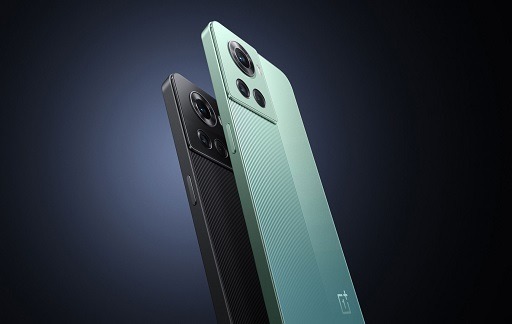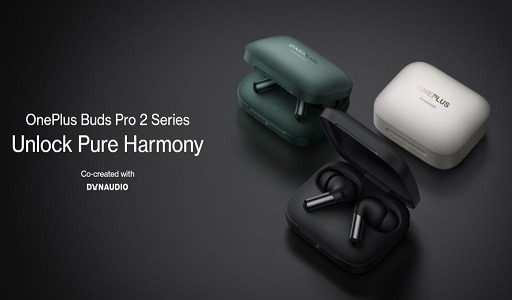Sonos Ray soundbar: Sonos is synonymous with multiroom wireless audio. It has also been developing home theater solutions for nearly a decade. During that time, it released two full-size soundbars. It has two midsized soundbars (the first and second generations of the Beam) and a quasi-soundbar/TV stand called the PlayBase. And, while each was a success in its own right, with prices ranging from $399 to $899, they left Sonos without a good option for those with smaller rooms and lower budgets — a gap that companies like Vizio have been happy to fill.
Now there’s the $279 Sonos Ray. It’s the company’s most affordable soundbar by a wide margin now that the second-generation Beam costs $449 — and it’s also one of the most affordable soundbars you can buy period. But, can such a small and low-cost speaker produce the kind of emotional listening experience that makes a soundbar worthwhile to purchase in the first place?

Sonos Ray Soundbar Design
The Ray, which is available in black or white, is understated in typical Sonos fashion. It will blend in with almost any decor thanks to its all-plastic construction and subtle branding. And it’s not just an aesthetic choice: Because The Ray’s drivers are all right up against the grille, you can completely surround the speaker’s cabinet with other objects, such as the dividers of your media stand, if you have one.
Sonos recommends 5 millimeters of clearance on the top and sides for the Ray, but that’s effectively nothing. An optional $39 wall-mount bracket adds to the placement flexibility — a ridiculous price for what is essentially a single piece of metal with a set of four screws. However, Sonos has always charged a premium for its speaker mounts.
The Ray is slightly narrower than its larger sibling, the Beam (22 inches versus 25.5 inches), but the two speakers are nearly identical in height and depth, making them ideal for use in smaller rooms and in front of smaller TVs.
Like all of Sonos’ recent products, the top surface features a set of discrete touch controls for play/pause, volume up/down, and skip track forward/back. However, because all of the speaker’s functions can be controlled via a mobile app, they aren’t required if you want to use the enclosure feature.
The Ray uses an infrared (IR) receiver on the bottom edge of the speaker to interpret volume up/down and mute commands from your TV or universal remote. However, because there is no IR repeater on the back of the unit, you must pay close attention to where your TV’s IR receiver is located. Given the Ray’s short stature, it’s unlikely that it will block that sensor, but if it does, you might have trouble controlling your TV.
Microphones for voice control are not available on the Ray. This comes as a surprise given that Sonos announced its own voice AI system, Sonos Voice Control, on the same day as the Ray, with a debut date of June 2022.
You may also like Sonos Move The Brilliant Outdoor Smart Speaker
Sonos Ray Soundbar Setup
Because the Ray is more than just a TV speaker, installation isn’t quite as simple. But, if you have never used a Sonos product before, you’ll be surprised at how simple it is.
Everything is done through the Sonos mobile app, which walks you through the process of setting up a new system and creating an account. Assuming you have already plugged the Ray into a wall outlet, the app will detect it and guide you through the process of connecting it to your TV. Have three minutes? That is all that is required.
That button on the back of the Sonos Ray soundbar can be thought of as a fail-safe: if the Sonos app is unable to identify the speaker, it will instruct you to press that button. You’ll be encouraged to add any music streaming services to your account near the end of the process. Sonos supports a wide range of them, so I won’t bother listing them here. Please let me know if you come across one that isn’t supported!
You’ll also be shown how to tune the Ray using the Trueplay procedure if you have an iPhone. Sonos still doesn’t support this on Android devices, but if you know someone who owns an iPhone, you could borrow it for a few minutes and then return it — Trueplay settings, like most Sonos settings, are stored on the speaker rather than in the app.
Sonos Ray soundbar Connections
One of the simplest sets of connections in the soundbar world can be found around the back of the Ray: A power cord port, an Ethernet port, an optical port, and a button for identifying the speaker during setup (more on that later).
That limited set of connections, particularly the lack of an HDMI ARC/eARC port, surprised me when Sonos unveiled the Ray, but it makes sense. If you want to do advanced surround formats like Dolby Atmos, you’ll need HDMI ARC/eARC, but since the Ray isn’t compatible with them (it’s only designed for stereo, Dolby Digital 5.1, and DTS Digital Surround), ARC/eARC will be of limited use.
Plus, because Sonos doesn’t include HDMI inputs on its other soundbars, you don’t have to sacrifice an HDMI port on your TV just to connect an external speaker. Sonos includes a matching 4.9-foot white or black optical cable in the box, giving you some placement options as long as you’re not trying to route it through a wall. If you require a longer cable, optical cables are relatively inexpensive.
You may also like Sonos Speakers: Sonos Roam The Tiny Speaker with Huge Value
Sonos Ray Sound quality
We have reviewed almost every Sonos speaker, and you would think I would be used to how the company’s engineers are able to extract so much sound from such small enclosures. Nonetheless, I am constantly astounded. The Ray may be intended for small-to-medium-sized rooms, but I believe Sonos is modest. This small box produces an impressive amount of sound.
But it’s the bass that really gets to you. Sonos speakers have always been capable of producing disproportionately big, boomy low-end, and the Ray continues this tradition. Sonos claims to have created a completely new bass reflex system for the Ray, which appears to have paid off. I’m not saying it can replace a dedicated subwoofer, but it’s surprisingly deep and resonant for its size.
The higher frequencies, where dialogue and sounds like dogs barking, bullets whizzing, and tires screeching can be heard, are also very clear. The Ray employs special waveguides in front of its twin tweeters, directing sound both forward and outward — and the results are audible. The speech sounds like it’s coming directly from the screen, but many of the other sounds in a movie or TV show’s soundtrack feel farther away.
When it comes to music, the results are nearly identical. The Ray, like all Sonos speakers, has a warm sound that I find very enjoyable. Audiophiles may prefer a so-called neutral frequency balance, but let’s face it: the Ray is not the speaker to buy if you want to do critical listening. If there’s one flaw in this small-format soundbar, it’s in the midranges.
Sonos expects the Ray’s two mid-woofers to deliver on almost every aspect except the highest frequencies, and physics eventually wins. This may appear as a “thinning out” of the middle tones, with some details becoming more difficult to discern. Still, with a few tweaks to the Sonos app’s treble and bass sliders, the Ray provides a nice balance and can be used to enjoy a wide range of genres.
If music is your primary focus, a $398 pair of One SLs will provide better stereo separation and a more articulate midrange, but that’s a significant price increase, and it won’t provide a sound solution for your TV.
AirPlay 2 is supported by the Ray for wireless streaming from Apple devices. Several music apps, including Spotify and Tidal, allow you to cast directly to the speaker. It’s useful when you want to send your iPhone, iPad, or Mac’s audio to some serious speakers (like when watching Netflix or YouTube), but I found that music quality on the Ray was still better when I worked directly with the Sonos app. Unfortunately, without the Sonos app and no built-in Chromecast or Bluetooth support, Android users are unable to conduct ad-hoc listening sessions.
You may also like Sonos Arc Review: A Solid Soundbar For The Dolby Atmos Era
Is the Beam better than the Ray?
Do you want to know how the Ray compares to the more expensive Beam Gen 2? The Beam is a more sophisticated product, with Dolby Atmos support, built-in mics for voice control, HDMI ARC/eARC connectivity, and a larger number of drivers and amps. When comparing them for TV and music, it’s clear that the Beam provides a more immersive and complete sound experience.
But it’s also clear that Sonos Ray soundbar manages to match a significant portion of the Beam’s audio performance. As long as you don’t need Beam’s technical or surround format advantages, I believe Ray’s lower price makes it a viable alternative.
It’s a Sonos
Ray’s performance is very good for its size, but if all you want is a soundbar for better TV sound, there are plenty of other great options at this price or less from Vizio, Yamaha, Samsung, and others. The Sonos platform is the real reason to choose Ray over these other systems.
We are not going to talk about the details now, but when you consider the many advantages, such as the universal search for music across all of your available sources, advanced playlist control, and the ability to add favorites from across services, as well as effortlessly manage playback on multiple speakers throughout your home, Ray’s price becomes a much better value.
You may also like Best Smart Speakers
Expanding options
That’s where the story ends with any ordinary $279 soundbar. The Sonos ecosystem, on the other hand, is expandable, both within the same room and to all of the other rooms in your home. A pair of Sonos-powered Ikea Symfonisk Bookshelf speakers can be added to the Ray for as little as $240 to create a proper surround sound system. Not bad considering you’re still a little over $500 at that point.
When you put the Ray through its paces with a pair of Sonos One speakers instead. The outcomes were impressive. The Sonos software was able to maximize the Ones’ already excellent bass response to fill in the gaps that the Ray couldn’t quite fill on its own, while also providing higher-frequency surround effects. When watching a live concert on Blu-ray, such as John Mayer’s 2007 Where The Light Is, you can hear Mayer’s virtuoso playing and the audience’s reaction as if you were standing in the first row.
It’s not Dolby Atmos-level immersion, but it’s close, and it sounds much better than a $449 Sonos Beam for only $677 — the price of a Ray bundled with two Sonos One SLs.
When you configure the Ray with surrounds, the app provides you with a number of additional options. You can control how much boost those speakers receive, with separate levels for TV and music use. To help the system provide the most immersive sound, you can adjust the distance between you and the speakers. When listening to music, you can choose between Ambient mode, which treats the Ray as the main sound source, with the surrounds acting as a gentle audio fill (great for listening while seated), and Full mode, which provides a four-channel stereo experience that’s ideal for parties or moving around your space.
With decoding support for both Dolby Digital 5.1 and DTS Digital Surround formats, the Ray can serve as the foundation for a true 5.1 system, but a subwoofer is required. At the moment, the only subwoofer option in the Sonos ecosystem is the $749 Sonos Sub. To be sure, it’s a fantastic subwoofer, but it’s both expensive and overkills for the Ray. If the rumors about Sonos releasing a smaller, less costly wireless subwoofer are true, it would be the ideal companion for both the Ray and the Beam.
Would you like to read more about Sonos Ray soundbar-related articles? If so, we invite you to take a look at our other tech topics before you leave!










